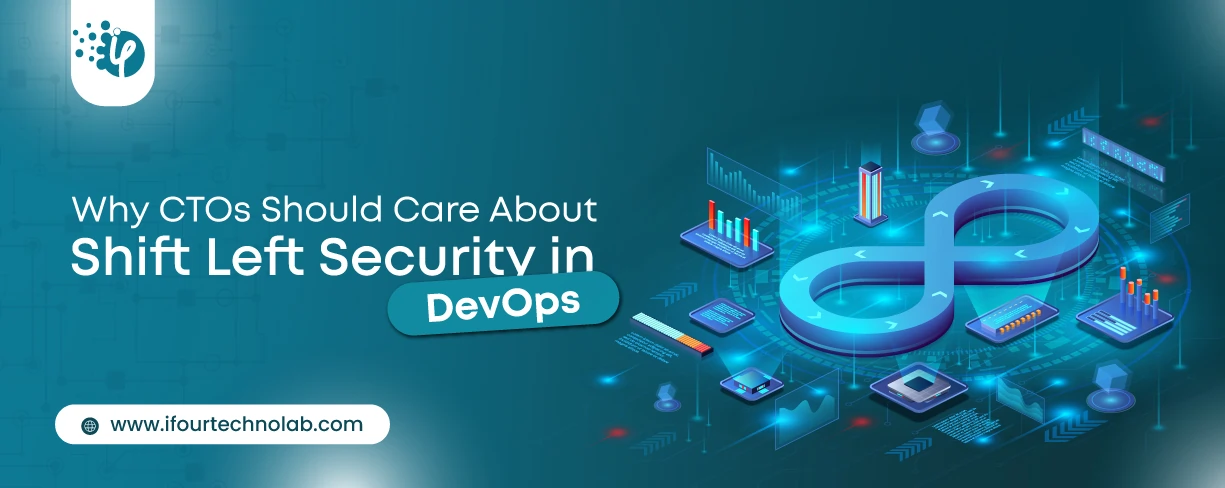How to Do Forecasting in Power BI (Steps & Accuracy Metrics)
Remember our last guide - Power BI forecasting? It revealed things that truly blocks accuracy, both structural and situational. Now it's time to take the next step. Knowing Power...
Listening is fun too.
Straighten your back and cherish with coffee - PLAY !
_Transforming_the_Healthcare_sector.webp)
Have you thought a decade ago that medical procedures and diagnostics might be taught digitally and realistically without causing harm? AR and VR, two leading technologies, not only make this feasible, but also aid clinicians in treating various phobias such as posttraumatic stress disorder, fear of heights, claustrophobia, driving, and others.
These smart glasses and head-mounted gadgets also aid clinicians in surgical simulation, 3D spinal anatomy imaging, and so on to provide patients with the best possible care.
Let’s take an in-depth look and understand how Augmented reality and Virtual reality (AR and VR) might aid the Healthcare industry and why these tools are seen as the future of therapy.
"Augmented reality (AR) and Virtual reality (VR) are technologies that are currently being used more and more in the business and entertainment world. However, they can also be used in healthcare to improve patient care, provider training, and more.
AR can be used in the healthcare field to improve patient care. For example, if a patient has a chronic condition, AR can be used to help them understand their condition and how to treat it. AR can also be used to help patients with procedures such as surgery. For example, if a patient is going to have surgery, they can use AR to see what the surgery will look like and how it will be done. This can help to reduce the anxiety that patients may feel about surgery.
VR can also be used in the healthcare field to improve patient care. For example, VR can be used to help patients with anxiety or phobias. VR can also be used to help patients learn about their conditions and procedures. VR can also be used to help providers train for procedures.
Both AR and VR have the potential to be used in the healthcare field to improve patient care. They are both quickly evolving technologies and have a lot of potentials."
"Undoubtedly, Augmented Reality (AR) and Virtual Reality (VR) technology can have a transformational effect across sectors. But how can these cutting-edge technologies specifically help the healthcare industry?
First and foremost, VR and AR can provide new ways for doctors to train. For example, medical students can use VR headsets to experience what it’s like to perform surgery or deal with other delicate procedures. What’s more, simulations can be created for specific cases so that students can get a sense of how to manage them before they ever step foot in a hospital."
- Morshed Alam, Founder & Editor at Savvy Programmer"AR and VR technology is becoming increasingly popular in a variety of industries, and healthcare is no exception. AR and VR can be used to train medical students and provide patients with immersive, pain-free experiences.
For example, medical students can use VR headsets to experience what it would be like to perform surgery or deliver a baby. Patients, on the other hand, can use AR to receive real-time information about their health or to escape from painful procedures. In addition, healthcare providers can use AR and VR to develop new treatments and improve patient care. The possibilities are endless, and AR and VR will revolutionize the healthcare industry in the coming years."
- Oberon Copeland, CEO of Very Informed"Augmented reality (AR), virtual reality (VR), and mixed reality (MR) are not just buzzwords in medicine; they are also valid solutions in education, vein or surgical visualization, relaxing patients, curing PTSD, speeding up recovery in physical therapy, and even supporting medical presentations. Augmented Reality solutions, among other things, can significantly improve the overall patient experience and make it less problematic by adding pop-up information and navigating features. Another way that AR and VR healthcare applications can improve patient experience is through extensions. Furthermore, augmented reality could be used in primary care clinics, operating rooms, emergency rooms, and dental offices. It could be used by doctors to plan plastic surgeries and other complex operations, for example. They could also use it to help guide them during various types of surgeries."
- Cindy Corpis, CEO of Search People Free"AR and VR provide a better understanding of what is happening to a patient. They can provide a visual representation of the patient's body. This helps doctors and nurses to identify any potential health issues. It is used by doctors, nurses, and therapists to improve their work performance and the patient’s experience. In addition, these technologies are being used in hospitals for training purposes. It is used to improve patient care, provide doctors with better information, give patients a better understanding of their condition, and improve surgical procedures. This technology has been used in the healthcare sector to provide realistic simulations to train surgeons before surgery or to provide virtual reality experiences."
- Dr. Ankit Patel, CEO of 24/7 Dental"VR training for brain and heart surgeons has been one of the most impactful applications of AR/VR in healthcare. Practice-makes-perfect is possible on VR training and, let's face it, none of us want a brand-new surgeon practicing on our brains or hearts.
Practice makes perfect also when it comes to making contaminant-free medicines that are injected into our bodies. This is particularly true for the cell and gene therapies that are saving lives, but only if the re-engineered cell or gene that is injected back into the patient is perfect and contaminant-free. All of these medicinal injectables are made in cleanrooms where even moving your hand too quickly can cause microbes to land in the solution."
- Michelle Fishburne from Virtuosi"AR and VR can help the healthcare sector by making exercise more immersive and fun. A lot of times, people are not able to find the motivation to exercise because the process of losing weight is all sweaty and no fun. That can be changed using AR and VR. VR has helped some of my clients feel like they are on a fun and interactive adventure while doing exercise. This also means that they don't always have to make it to the gym- these experiences can make it possible for the person to maintain fitness while working out from home.
Another advantage is that people can watch instructional videos over VR and AR which made it possible for so many to stay fit during the pandemic when we couldn't meet trainers offline to learn exercises."
- Isaac Robertson, Co-Founder at Total Shape"Nurses and physicians have also employed augmented reality to enhance vein identification. This tackles the problem that, for many patients, having blood drawn may be traumatic and painful, as well as demanding for the practitioner, since identifying a vein can be tough at times, particularly in individuals with highly pigmented skin or tiny blood vessels. AR-enabled technology such as Accuvein may be used to solve these problems. This technology employs a laser-based scanner, a processing system, and a digital laser projection system packed in a handheld, portable device. This lets practitioners observe a virtual picture of the underlying vasculature on the skin's surface in real-time. This allows them to recognize veins more accurately and provides direction for administering intravenous injections with less patient pain"
- Olga Dogadkina Founder & CEO, Emperia"Based on my experience with healthcare organizations and medical startups, AR and VR technologies proved to be efficient in the fields of medical education, surgery planning, and patient rehabilitation. AR and VR help build a strong understanding of human anatomy, train surgery skills, practice emergency procedures, and hone soft skills (e.g., communication with patients, and conflict resolution). Experienced medical professionals use AR and VR techs to plan high-precision surgeries and minimize potential risks. As for rehabilitation and physical therapy, VR- and AR-based solutions improve patient engagement, and motivation, and provide opportunities for remote therapy."
- Maryia Khilko, SEO Assistant at ScienceSoft"AR and VR technology provide a unique opportunity to engage the digital generation about important topics in healthcare. As the number of concussions continues to rise around the globe, the need for effective preventative healthcare through education is increasing.
At the intersection of technology and healthcare, CrashCourse was able to combine VR technology and the latest medical knowledge to provide free concussion education to thousands of students, parents, and coaches.
The immersive VR experience makes concussion education appealing and tangible to a digital generation while increasing learning, and is currently used by over 20 National Governing Bodies throughout the U.S. Olympic Committee as well as top organizations like Pop Warner, USA Football, and others throughout athletics.
CrashCourses’ VR educational tools help combat the dangerous lack of concussion education by engaging students in a meaningful way."
- Dara Begley, from Techaids"Virtual reality can help the healthcare industry by helping researchers and scientists learn more about the human body and how it can save people’s lives in the future. There are forms of cancer, for example, that may be discovered that would need new types of chemotherapy or treatment. Medical education can improve with VR technology. You can use virtual reality to perform a surgery or a procedure before you know it is safe to perform on a real person. This means VR can improve the healthcare provided to people and advance the practices and techniques that are used. It removes the need to experiment with new procedures on animals."
- Shawn Laib is a healthcare expert at ClearsuranceAR and VR technology are assisting healthcare industries in a variety of ways to give the finest treatment and care possible. They drive company growth and assist physicians in making precise clinical choices using 3D anatomy imaging, simulation during surgery, and other capabilities. In this blog, we discussed in detail how AR and VR (Augmented reality and Virtual reality) may benefit the healthcare industry. It will help you comprehend why these devices are seen as the future of therapy.

Remember our last guide - Power BI forecasting? It revealed things that truly blocks accuracy, both structural and situational. Now it's time to take the next step. Knowing Power...

Security has always been a major concern. Your company spends millions on cybersecurity tools, and guess what? You’re still vulnerable. When you're working in the cloud, especially...

Automation isn’t just a trend anymore. It’s a must-have for any business relying on the Cloud. As the firm grows, cloud infrastructure gets more complex. So, choosing the right Infrastructure...